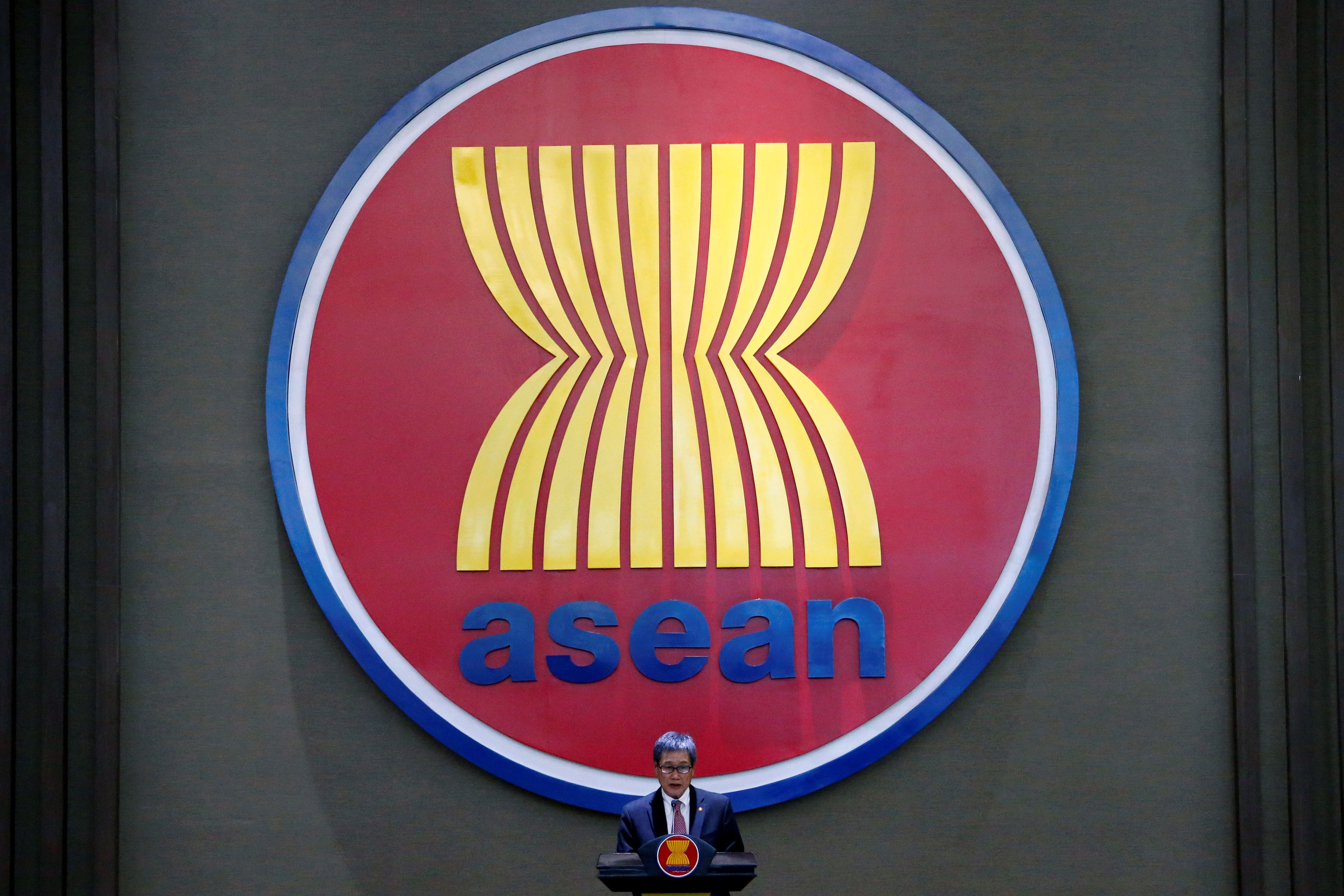Consequences of COVID-19 in ASEAN States

Pandemic
ASEAN member states were among the first to be hit by the pandemic because of their close economic and tourism ties with China. On a total population of about 650 million, these countries recorded more than 426,000 infections and more than 10,000 deaths by 27 August. The effects of fighting the pandemic in the region have varied. The most infections were recorded in the Philippines (197,200), Indonesia (157,900) and Singapore (56,400), with markedly fewer in Thailand (34,000) and Malaysia (9,300). Cambodia, Myanmar, Laos, and Brunei have detected the fewest cases (a bit more than 1,000 cases altogether). Vietnam stands out for its case numbers: despite a large population (almost 100 million people), the country officially recorded only slightly more than 1,000 infections. However, the total COVID-19 statistics for ASEAN are probably on the low side of reality. This is in part because of the small number of tests performed (especially in the poorest countries) and the probable withholding of information about the scale of the crisis, especially in authoritarian countries such as Cambodia. In July and August, there was a significant increase in infections, especially in the Philippines, where daily records in the region were broken (more than 6,700 cases).
Most ASEAN countries have used similar measures to combat the pandemic, but they implemented them at different times and on various scales. The measures include restrictions on movement, the closure of factories, shops, and service points, quarantine of people who have come into contact with the infected, border closures, as well as tracing the transmission of infections. The earliest restrictions after the first cases of the coronavirus appeared in China were implemented in Vietnam and Singapore. Other countries, such as Indonesia and Malaysia, introduced restrictions as local infections increased. Some such as Myanmar, Laos, and Cambodia, however, did not introduce major restrictions. The examples of Singapore and Vietnam, where after initial successes outbreaks of infections emerged (in April and July, respectively) show the difficulty of containing the pandemic. The activities are complicated by the varying levels of healthcare—higher in Singapore, Malaysia and Thailand, but low in Indonesia, Cambodia, or Laos.
Socio-Economic Situation
As a result of the restrictions introduced in ASEAN countries, economic activity dropped significantly in the first half of this year. Supply chains in the region were disturbed, which resulted in a decline in trade. Low oil prices have also hit some countries harder than others (Malaysia and Indonesia). The crisis caused a large drop in revenues from services, including tourism, which accounts for over 25% of GDP in Cambodia and the Philippines, and about 20% in Thailand. In a report from June, the Asian Development Bank predicts that Southeast Asian countries (ASEAN and East Timor) will see a decline in GDP this year by 2.7%, with the deepest recession in Thailand (-6.5%), Singapore (-6%), and Cambodia (-5.5%). Only Brunei, Myanmar, and Vietnam may record GDP growth (the latter by 4.1%). As a result, unemployment will increase in the region—in the period April-June in the Philippines, it amounted to almost 18% (compared to slightly more than 5% in the first quarter) while in Indonesia it may reach 9.2% by the end of the year (5.2% in 2019).
To mitigate the severity of the pandemic, governments introduced economic stimulus packages. Singapore and Malaysia have earmarked about $67 billion for this purpose (about 20% and 18% of GDP, respectively), and Indonesia and Thailand about $48 billion (about 4% and 9% of GDP, respectively). The stimulus includes tax breaks, benefits for the unemployed and the poorest families, and subsidies for healthcare. The hope for a reduction in the scale of the recession comes from the increase in economic activity after the lifting of restrictions in most ASEAN countries in May and June. The economic situation of the organisation’s largest trade partner, China, is also improving. In the first half of 2020, bilateral trade grew by 2% on an annual basis, which, along with the decline in China’s trade with the U.S. and the EU, made ASEAN a leader among its trading partners for the first time in history.
Actions within ASEAN
The pandemic has highlighted the weaknesses of ASEAN’s integration process. This applies to the lack of coordination of actions at the beginning of the crisis, such as closing borders without consulting neighbours or banning exports, including personal protective equipment. To solve the emerging problems, some countries such as Malaysia and Singapore strengthened their bilateral cooperation. However, there have been calls, including by the ministers of economy and health, for cooperation throughout ASEAN, such as ensuring supply chains and information exchanges. The bloc has achieved some positive results, for example, in monitoring the course of the pandemic and ensuring food supplies. In addition, at a special summit of the organisation on 14 April, the leaders of member states announced the creation of a plan for economic recovery after the pandemic, as well as a fund to support combating the effects of COVID-19 (confirmed at the ASEAN summit on 26 June).
ASEAN also aims to strengthen foreign cooperation. In February, the foreign ministers of ASEAN and China announced, among others, facilitating trade in medical products (Chinese supplies to the countries of the region have increased since March). At the April ASEAN+3 summit, closer cooperation with China, Japan, and South Korea was announced, for example, in ensuring food security. On 20 March, at the EU-ASEAN meeting, the two sides pointed to the need to cooperate on maintaining supply chains and research. Because of the pandemic, the ASEAN-U.S. summit that was to be held in Las Vegas in March was postponed. However, on 23 April, a special meeting of ASEAN foreign ministers and U.S. Secretary of State Mike Pompeo, resulted in the announcement of cooperation in public health and other areas.
Conclusions and Prospects
The socio-economic problems of the ASEAN countries as a result of the pandemic are will continue for at least the coming months. This may result in increased social unrest. However, the crisis may provide the opportunity to strengthen cooperation in some areas, such as the collection and supply of medical equipment or border traffic management.
The expected economic rebound in ASEAN may be limited by re-imposed restrictions as a result of subsequent waves of the pandemic, or increasing protectionism. The member states, however, benefit economically from the escalation of tensions between the U.S. and China, including the relocation of factories from China (to avoid U.S. duties and rising labour costs) and increasing exports to both countries. However, there are challenges associated with this, for example, the possibility of U.S. duties depending on the trade deficit with the Association’s members or the redirection of some Chinese exports from the U.S. to ASEAN. Even stronger ties between ASEAN and China will be favoured by the Regional Comprehensive Economic Partnership (RCEP) agreement, which is to be signed in 2020. It will tighten the economic integration of 15 countries—ASEAN members, Japan, South Korea, Australia, New Zealand, and China.
Rebuilding export-driven economies and China’s growing influence in the region may induce the ASEAN countries to diversify their trade and investment ties. This would favour the intensification of EU cooperation with the Association and support faster recovery from the economic crisis by both sides. RCEP may, however, result in partial replacement of ASEAN’s trade with the EU by exchange in goods and services with countries in the Asia-Pacific region. To counteract this, it is possible to use more extensively the EU’s existing trade agreements with Singapore and Vietnam (which entered into force in November 2019 and August 2020, respectively), as well as to accelerate talks with Indonesia and the Philippines. Cooperation may also be fostered by further investments by European companies shifting some of their production from China. The pandemic may also induce the EU and ASEAN to cooperate more closely in other areas, including science (e.g., in Thailand, advanced work on a vaccine for SARS-CoV-2 is underway), digitalisation (e.g., in healthcare), or crisis-management, including the exchange of experience in collecting medical resources. The EU has already announced €800 million to help fight the pandemic in ASEAN. The challenges to bilateral cooperation include violations of human rights in ASEAN countries; for example, citing this reason, the EU restricted Cambodia from duty-free access to the single market in August.


